Portal for more climate-friendly mobility
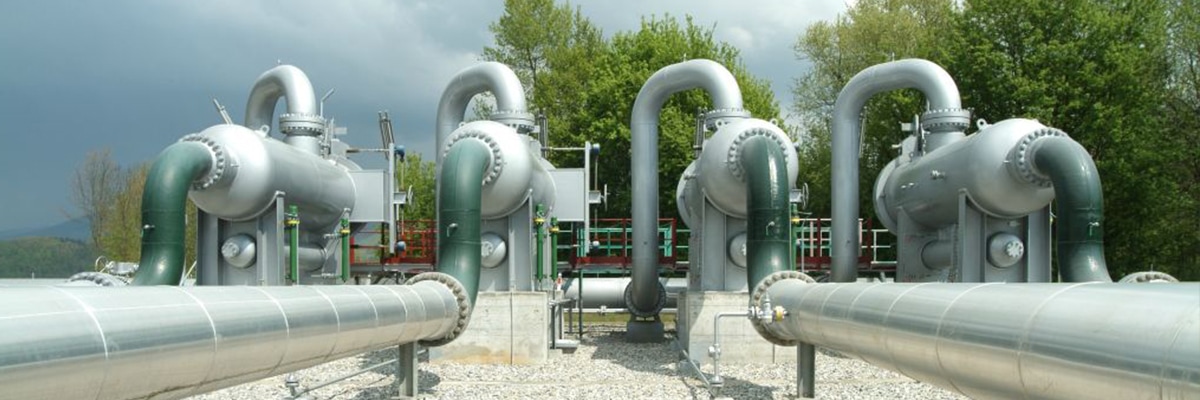
How CNG engines react to H2
CNG vehicles must have a hydrogen tolerance of two percent by volume. But what happens if more H2 is added to CNG in the future? Experts from the German Gas and Water Association (DVGW) wanted to find out and therefore investigated the influence of a higher hydrogen content on the European gas infrastructure and, not least, on CNG engines.
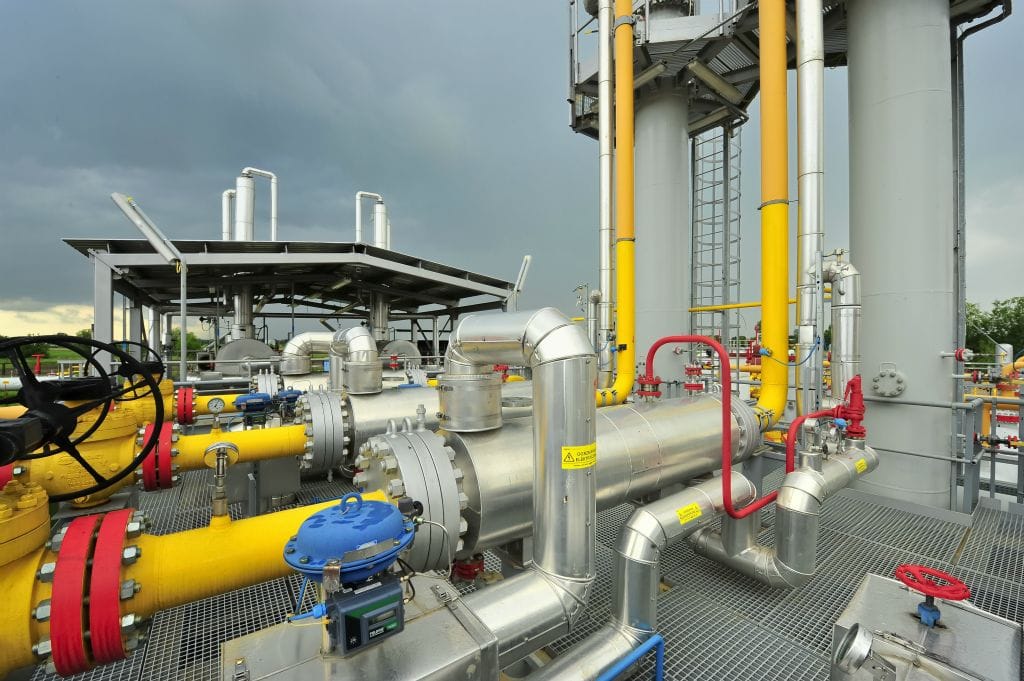
The gas grid offers ideal conditions for receiving, storing and transporting climate-neutral gases. Source: GIE
The proportion of renewable energies across Europe needs to increase significantly in order to meet the ambitious targets set by politicians with regard to CO2 reduction. Biogas, synthetic gas and hydrogen (H2) will play an important role in this. From both a technical and economic point of view, the gas network offers ideal conditions for storing, transporting and distributing carbon-neutral gases to all sectors, from industry to commerce and mobility.
Biogas and synthetic methane can already be fed into the existing gas infrastructure without any problems. However, incorporating hydrogen into the existing gas network has its limitations. An increase will require a gradual adaptation of both the infrastructure and end users. In particular, underground gas storage facilities, CNG vehicles, gas turbines, stationary gas engines and industrial or domestic gas appliances need to be adapted.
 The CNG drives of passenger cars and also of commercial vehicles have so far been able to process up to two percent by volume of hydrogen in the gas mix without any problems. Source: CNG-Mobility.ch
The CNG drives of passenger cars and also of commercial vehicles have so far been able to process up to two percent by volume of hydrogen in the gas mix without any problems. Source: CNG-Mobility.ch
Today, CNG vehicles must have a hydrogen tolerance of two percent by volume, which is ensured by the H2 tolerance of the tank system and the fuel specifications, meaning that no higher an H2 value is offered at filling stations. Various studies have shown that an admixture of up to 10 percent by volume of H2 would be feasible for large parts of the gas network. Now, the first companies want to defossilise their processes by using H2. In the medium and long term, gas qualities with a higher or fluctuating hydrogen content could therefore be present in the transport and distribution network.
Experts have now analysed five transition scenarios with different H2-methane mixtures in order to identify the most cost-efficient transformation method possible. In the case of vehicles, it became clear that the use of flexifuel is feasible in principle for all defossilisation scenarios. However, the expected additional costs increase where the maximum H2 content is used and are largely determined by the tank system. DVGW experts do not expect any significant costs associated with making adjustments for an H2 admixture of up to 10 percent by volume, but for admixtures with 0 to 30 or 0 to 100 percent by volume, the greatest additional costs will be incurred.
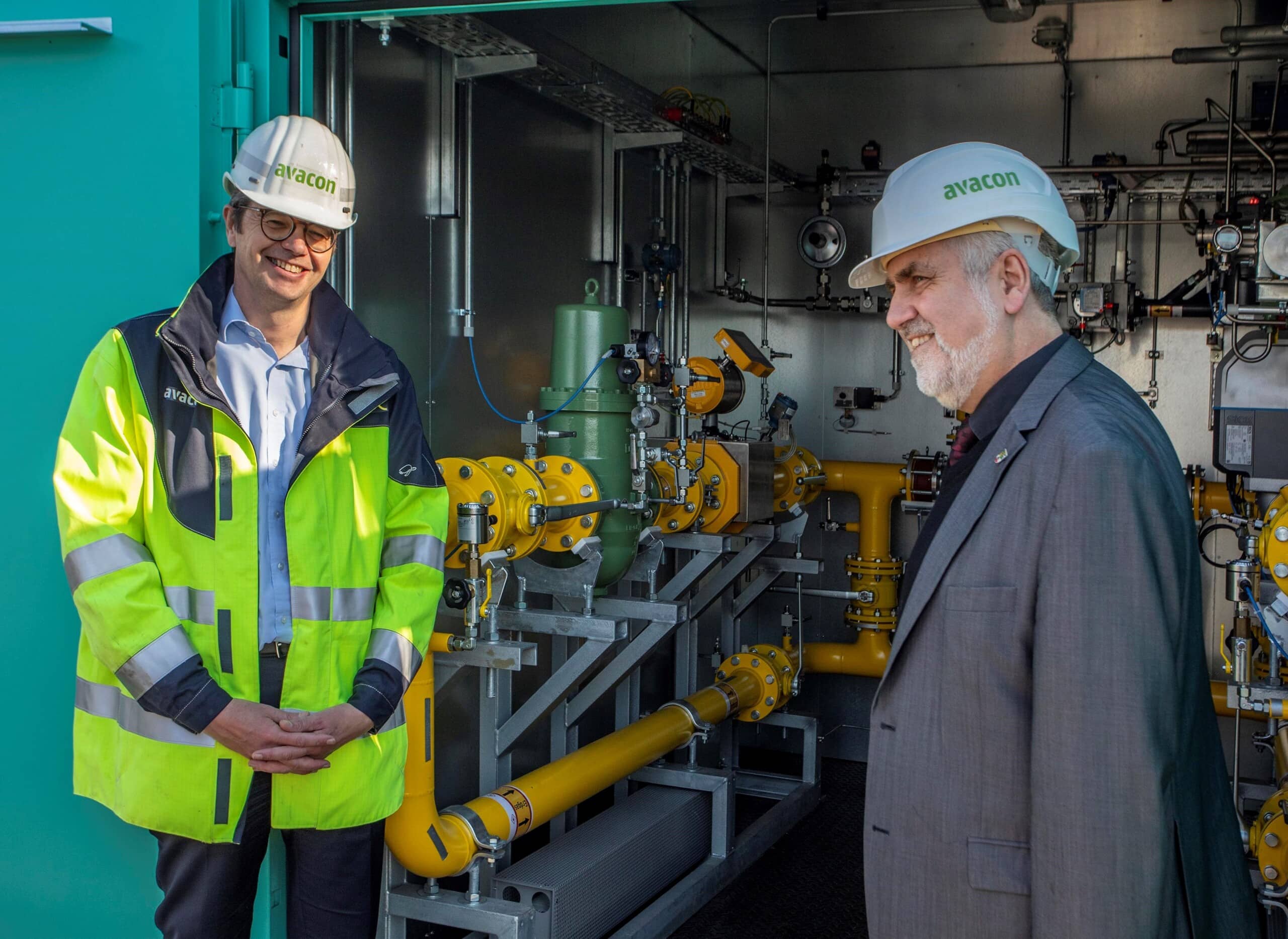 Saxony-Anhalt’s Minister of the Environment Armin Willingmann and Avacon-Netz Managing Director Frank Schwermer give the go-ahead for a hydrogen admixture of 20 percent in a test section. Source: Avacon
Saxony-Anhalt’s Minister of the Environment Armin Willingmann and Avacon-Netz Managing Director Frank Schwermer give the go-ahead for a hydrogen admixture of 20 percent in a test section. Source: Avacon
What’s more, DVGW experts believe that retrofitting up to 100 percent H2 by volume in combination with a lower drive power – depending on the pressure of the tank system (350 or 700 bar) – is not technically feasible due to an expected loss of range of the vehicles. They also recommend using a hybrid drive solution, as is the case with the current CNG vehicles.
The DVGW experts do not see any great differences between the various conversion scenarios in terms of technical and economic feasibility, but there certainly are variations when it comes to the distribution of the costs. A higher proportion of hydrogen in the grid leads to a significant reduction in the costs of producing renewable gas. However, they shift the majority of the subsequent costs from the infrastructure to the manufacturers of vehicles and engines. Methanation and membrane separation could offer an economical alternative to vehicle and gas station adaptation. One thing is clear: in-depth discussions between vehicle and engine manufacturers as well as infrastructure and gas providers will still be needed so that a transformation and cost allocation plan can be agreed upon. In light of the constantly growing CO2 footprint around the world, it is important to prioritise prevention options that can be implemented quickly. (jas, 14 April 2022)
Click here for the full abstract of the DVGW research project on “H2 in the gas network and interaction with gas engines”.
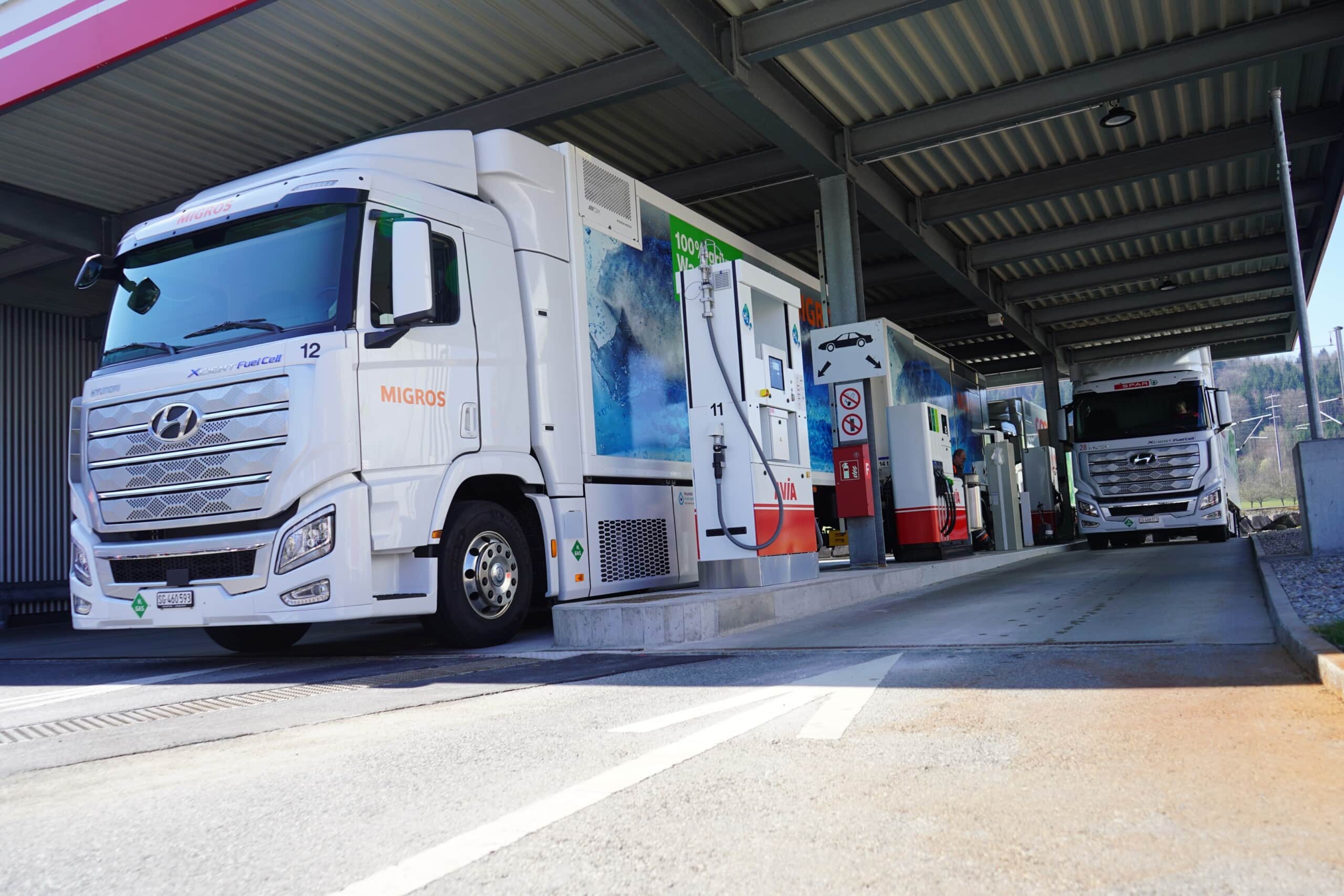 The hydrogen filling station for trucks in Gossau SG currently still has to be supplied with green hydrogen via containers, but perhaps a supply via the gas grid is conceivable one day. Source: CNG-Mobility.ch
The hydrogen filling station for trucks in Gossau SG currently still has to be supplied with green hydrogen via containers, but perhaps a supply via the gas grid is conceivable one day. Source: CNG-Mobility.ch
The most important facts about hydrogen in Switzerland: H2 Barometer.
Hydrogen is a topic that is becoming increasingly important for the Swiss gas industry. The Swiss Gas Industry Association, together with the consulting companies e-Bridge and Polynomics, has therefore launched the H2-Barometer, which assesses the investment climate in the hydrogen economy in Switzerland. The H2-Barometer serves investors, authorities and other stakeholders from business, politics, administration and science to evaluate and assess the framework conditions for the hydrogen economy in Switzerland. For the time being, the barometer will be published semi-annually and is also available on gazenergie.ch. The H2-Barometer makes it possible to assess the development in Switzerland over time. Renewable gases such as green hydrogen, biogas or synthetic methane play an important role in the decarbonization of gas supply. They will successively replace natural gas. The Swiss gas industry supports the Federal Council’s net-zero 2050 target and is actively working towards it.
You might also be interested in
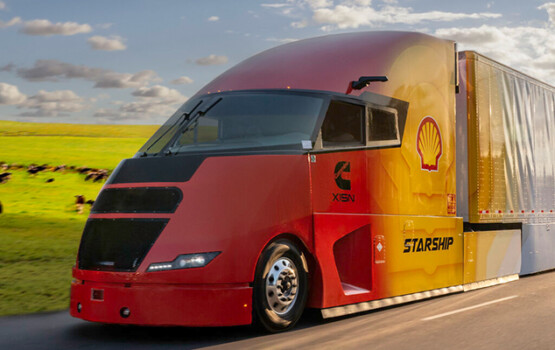
Shell Starship on record hunt
